

By: Brian M. Hodges, PharmD, BCPS, BCNSP

https://directory.hsc.wvu.edu/Profile/38443
These two species are the most typical causative agents of mucormycosis women's health clinic somerset ky cheap 100 mg femcare fast delivery, accounting for some 60% of the reported instances breast cancer 98 curable cheap 100mg femcare overnight delivery. Morphological Description: the genus Rhizopus is characterised by the presence of stolons and pigmented rhizoids pregnancy 8th week femcare 100mg without prescription, the formation of sporangiophores womens health 4 week half marathon buy femcare on line, singly or in groups from nodes immediately above the rhizoids, and apophysate, columellate, multispored, usually globose sporangia. Sporangiospores are globose to ovoid, one-celled, hyaline to brown and striate in many species. Morphological Description: colonies are very fast growing, about 5-eight mm high, with some tendency to collapse, white cottony at frst turning into brownish grey to blackish-grey relying on the quantity of sporulation. Sporangiophores up to 1500 ?m in size and 18 ?m in width, clean-walled, non-septate, easy or branched, arising from stolons opposite rhizoids normally in groups of three or more. Sporangia are globose, usually with a fattened base, greyish black, powdery in appearance, up to one hundred seventy five ?m in diameter and plenty of spored. Sporangiospores are angular, subglobose to ellipsoidal, with striations on the floor, and up to eight ?m in size. O O b 20 ?m a c one hundred ?m Rhizopus arrhizus (a) tradition, (b) columellae and (c) sporangia showing sporangiospores, sporangiophores and rhizoids. Morphological Description: colonies are darkish greyish-brown, up to 10 mm high producing easy rhizoids. Sporangiophores are brownish, up to four hundred ?m high and 10 ?m wide, and may be produced in groups of one to 4, normally in pairs. Sporangiospores are angular to broadly ellipsoidal or subglobose, up to 5-9 ?m in size and are distinctly striate. Zygospores are darkish red?brown, spherical, up to one hundred ?m in diameter, with stellate projections and unequal suspensor cells. O 30 ?m Rhizopus microsporus sporangia showing sporangiospores, columellae, sporangiophores and rhizoids. Descriptions of Medical Fungi 171 Rhodotorula Harrison Rhodotorula species are frequent environmental basidiomycetous yeasts, which may be found in soil, ocean and lake water, fruit juice and milk, and on bathe curtains and toothbrushes. Today, the genus incorporates forty six species of which three have been described as rare human pathogens: R. Rhodotorula mucilaginosa is a typical airborne contaminant of pores and skin, lungs, urine and faeces. This is normally due to saprophytic colonisation of catheters or dialysis machinery and removal of the supply of contamination normally leads to clearing of the symptoms. Morphological Description: colonies are coral red to salmon-coloured or slightly orange, clean to wrinkled, highly shiny to semi-shiny. Physiological Tests: + Positive, Negative, v variable, w Weak, s Slow, nd No information germ Tube l-Sorbose v L-arabinose v D-glucitol v Fermentation Sucrose + D-arabinose v? Note: Rhodotorula species are intrinsically proof against azoles and echinocandins (arendrup et al. Morphological Description: colonies are coral pink, normally clean, sometimes reticulate, rugose or corrugated, moist to mucoid, yeast-like colonies. This species is phylogenetically closely associated to Candida glabrata and shares many clinical and microbiological characteristics to this species (arendrup et al. Morphological Description: colonies are white to cream, clean, glabrous and yeast-like. Until lately, Saksenaea vasiformis was the only identified species with a worldwide distribution in association with soil. Saksenaea vasiformis Saksena Morphological Description: colonies are fast growing, downy, white with no reverse pigment, and made up of broad, non-septate hyphae typical of a mucormycetous fungus. Sporangia are typically fask-formed with a definite spherical venter and long neck, arising singly or in pairs from dichotomously branched, darkly pigmented rhizoids. Sporangiospores are small, rectangular, 1-2 x 3-four ?m, and are discharged by way of the neck following the dissolution of an apical mucilaginous plug. Key Features: Mucorales, unique fask-formed sporangia, failure to sporulate on major isolation media. Sporulation may be stimulated by using the agar block technique described by Ellis and ajello (1982), Ellis and Kaminski (1985) and Padhye and ajello (1988), although this may nonetheless take a interval of days to weeks. Saprochaete clavata (formerly known as Geotrichum clavatum), which can also be closely associated to Magnusiomyces capitatus (formerly known as Geotrichum capitatum or Saprochaeta capitata), has solely very sometimes been described as concerned in invasive human infection. However, an outbreak of invasive infections attributable to Saprochaete clavata in haematology sufferers has been reported (vaux et al. Morphological Description: colonies are reasonably fast growing, fat, whitish and butyrous. True hyphae are ample, soon breaking up into rectangular arthroconidia of variable measurement, 2. Note: Saprochaete clavata and Magnusiomyces capitatus are human pathogens that are closely associated and are regularly mistaken for each other. Physiological Tests: + Positive, Negative, v variable, w Weak, s Slow, nd No Data germ Tube l-Sorbose + L-arabinose D-glucitol Fermentation Sucrose D-arabinose M-D-glucoside glucose Maltose D-Ribose D-gluconate galactose cellobiose + l-Rhamnose Dl-lactate +,w Sucrose Trehalose D-glucosamine myo-Inositol Maltose lactose N-a-D-glucosamine nd 2-K-D-gluconate lactose Melibiose glycerol + D-glucuronate nd Trehalose Raffnose Erythritol Nitrate Assimilation Melezitose Ribitol Urease glucose + Soluble Starch galactitol zero. Sarocladium may be morphologically differentiated from Acremonium by its elongated phialides rising solitary on vegetative hyphae or on conidiophores that are sparsely or repeatedly branched, the production of ample adelophialides and elongated conidia. Morphological Description: colonies growing quickly, moist to slimy, pink or orange; reverse remaining colourless or turning pink to orange. Phialides slender, arising from submerged or slightly fasciculate aerial hyphae, 20-65? The taxonomy of this genus has been subject to change on the idea of sequence information; Scedosporium apiospermum and Scedosporium boydii (formerly Pseudallescheria boydii) are actually recognised as separate species and together with S. The majority of infections are mycetomas, the remainder embrace infections of the attention, ear, central nervous system, inside organs and more generally the lungs. Morphological identifcation of Scedosporium species has turn into more and more unreliable and molecular identifcation methods are actually really helpful. Morphological Description: colonies are fast growing, greyish-white, suede-wish to downy with a greyish-black reverse. Numerous single-celled, pale-brown, broadly clavate to ovoid conidia, four-9 x 6-10 ?m, rounded above with truncate bases are noticed. O a hundred and eighty Descriptions of Medical Fungi Scedosporium apiospermum (Saccardo) Castellani and Chalmers 20 ?m a 10 ?m b c Scedosporium apiospermum (a) conidiophores and conidia, (b) tradition and (c) synnemata. Morphological Description: Most isolates produce a light yellow diffusible pigment on potato dextrose agar after a couple of days incubation. When crushed cleistothecia launch numerous, faintly brown, ellipsoidal ascospores, four-5 x 7 9 ?m in measurement. Morphological Description: colonies on 2% malt extract agar are spreading, woolly, whitish to pale greyish-brown, soon forming macroscopically visible fruiting our bodies. Several species have been reported as causative agents of onychomycosis and hyalohyphomycosis (Sandoval-Denis et al. Morphological Description: colonies are fast growing, various in colour from white, cream, grey, buff to brown and black, but are predominantly mild brown. Microscopic morphology exhibits chains of single-celled conidia produced in basipetal succession from a specialised conidiogenous cell called an annellide. Once again, the time period basocatenate can be utilized to describe such chains of conidia the place the youngest conidium is at the basal finish of the chain. In Scopulariopsis, annellides may be solitary, in groups, or organised into a definite penicillus. Key Features: Hyphomycete, conidia usually formed like mild globes, basocatenate arising from annellides. References: Morton and Smith (1963), Mcginnis (1980), Rippon (1988), Samson et al. Morphological Description: colonies are reasonably fast growing, normally white to golden yellow, suede-wish to downy, turning into fuffy with age. Key Features: Hyphomycete, producing large, thick-walled, one-celled, verrucose, globose, terminal conidia from non-specialised conidiophores, resembling the macroconidia seen in Histoplasma capsulatum. Sporothrix schenckii advanced is a dimorphic fungus and has a worldwide distribution, notably in tropical and temperate regions. It is commonly found in soil and on decaying vegetation and is a well known pathogen of people and animals. Sporotrichosis is primarily a persistent mycotic infection of the cutaneous or subcutaneous tissues and adjoining lymphatics characterised by nodular lesions which can suppurate and ulcerate.
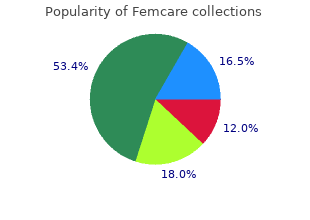
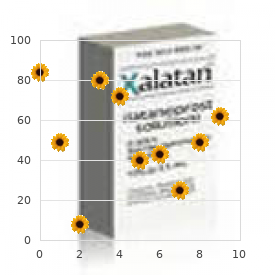

However breast cancer event ideas cheap femcare 100 mg overnight delivery, in face of an infection menopause the musical atlanta purchase cheap femcare on-line, a speedy intervention is important and menstruation ovulation cycle order femcare 100 mg mastercard, for this pregnancy old wives tales gender purchase femcare us, different options to antifungals and antimicrobials are needed. Opportunistic yeast infections: candidiasis, cryptococcosis, trichosporonosis and geotrichosis. Candida albicans: a review of its historical past, taxonomy, epidemiology, virulence attributes, and methods of strain differentiation. Candida albicans-epithelial interactions: dissecting the roles of active penetration, induced endocytosis and host elements on the infection course of. Epidemiology of Candida species infections in critically ill non-immunosuppressed sufferers. Nosocomial Candida albicans acquisition in a geriatric unit: epidemiology and evidence for individual-to-individual transmission. Candida glabrata and Candida albicans co-infection of an in vitro oral epithelium. Dispersion as an essential step within the Candida albicans biofilm developmental cycle. Candida species: present epidemiology, pathogenicity, biofilm formation, natural antifungal merchandise and new therapeutic options. Patient preferences and treatment security for uncomplicated vulvovaginal candidiasis in primary health care. Reviews resistance of Candida species to antifungal agents: molecular mechanisms and clinical penalties. Chemical composition and in vitro antimicrobial, antifungal and 30 antioxidant properties of important oils obtained from some herbs extensively utilized in Portugal. Antifungal activity of Coriandrum sativum important oil, its mode of motion against Candida species and potential synergism with amphotericin B. Review of pharmacological properties and chemical constituents of Pimpinella anisum. Candida glabrata and Candida albicans; dissimilar tissue tropism and infectivity in a gnotobiotic mannequin of mucosal candidiasis. Comparison of the epidemiology, drug resistance mechanisms, and virulence of Candida dubliniensis and Candida albicans. Oropharyngeal candidiasis: a review of its clinical spectrum and present therapies. The epidemiology of Candida species related to vulvovaginal candidiasis in an Iranian patient inhabitants. Chronic vulvovaginal candidiasis: traits of ladies with Candida albicans, C. Prevalence of Candida species and potential risk elements for vulvovaginal candidiasis in Aligarh, India. Antifungal susceptibility and genotypes of Candida albicans strains from sufferers with vulvovaginal candidiasis. Genital colonisation and infection with candida in heterosexual and gay males. Colonisation of extragenital websites by Candida in girls with recurrent vulvovaginal candidosis. Pathological analysis of the Candida albicans-infected tongue tissues of a murine oral candidiasis mannequin within the early infection stage. Biofilm formation of Candida albicans is variably affected by saliva and dietary sugars. The importance of strain variation in virulence of Candida dubliniensis and Candida albicans: results of a blinded histopathological examine of invasive candidiasis. Lactoferrin in human milk: its function in iron absorption and protection against enteric infection within the new child infant. Copper and iron are the limiting elements for development of the yeast Saccharomyces cerevisiae in an alkaline surroundings. High environmental iron concentrations stimulate adhesion and invasive development of Schizosaccharomyces pombe. Th1 immunity induction by ginsenoside Re entails in protection of mice against disseminated candidiasis as a result of Candida albicans. Candida albicans versus non-albicans bloodstream infections: the comparability of risk elements and end result. Epidemiology of clinical isolates of Candida albicans and their susceptibility to triazoles. Oropharyngeal candidiasis and oral yeast colonization in Iranian Human Immunodeficiency Virus positive sufferers. Virulence elements for Candida spp recovered from intravascular catheters and hospital workers palms. Commercialized speedy immunoanalytical checks for determination of allergenic food proteins: an outline. Serum IgE and IgG responses to food antigens in normal and atopic dogs, and dogs with gastrointestinal illness. Therapeutic effects on murine oral candidiasis by oral administration of cassia (Cinnamomum 36 cassia) preparation. Correlation of Antimicrobial Activities of Various Essential Oils and Their Main Aromatic Volatile Constituents. Antioxidant and antimicrobial activities of important oil and extracts of fennel (Foeniculum vulgare L. Antimicrobial Activities of Roman Chamomile Oil From France and Its Main Compounds. Antibacterial and antifungal activity of ethanolic extracts from eleven spice vegetation. Antimicrobial and antioxidant properties of rosemary and sage (Rosmarinus officinalis L. Efeitos do cha de tomilho sobre a aderencia in vitro de Streptococcus mutans ao esmalte dentario e Candida albicans a resina acrilica. In vitro antimicrobial activity of Thymus vulgaris, Origanum vulgare and Rosmarinus officinalis against dental caries pathogens. The antimicrobial activity of 4 industrial important oils together with standard antimicrobials. Role of Probiotics in health improvement, infection management and illness treatment and management. Representative scheme of interactions between the principle variables related to candidiasis. Main general pointers for private hygiene [forty nine,59,60,62] Procedures Avoid contact with different body components, as well as with different individuals Superficial infections Maintain the skin clear and dry During menstruation, compresses with out beauty merchandise should be used Avoid frequent use of vaginal douches and intimate hygiene merchandise (they alter the traditional vaginal pH, inflicting unbalance and favoring the onset of infection) Maintain external vaginal space utterly dry Vaginal candidiasis Avoid prolonged use of bathing suit or damp or wet underwear the act of cleaning up should at all times be done backward Avoid sexual relations throughout antifungal therapy Bed linen, rest room and private clothes should be washed with extremely popular water, separated from the others at Personal belongings house and disinfected after use Avoid tight clothes and use cotton underwear 40 Table 2. Dietary considerations within the treatment of candidiasis [fifty seven,59,60,62,97] Food traits Food merchandise Refined carbohydrate sources Refined sugars (sucrose, fructose, corn syrup), fruit juice, honey, maple syrup Fungi and/or yeast sources Alcoholic beverages, dried fruits, To keep away from cheeses, peanut Lactose and antibiotic sources Dairy merchandise Allergenic foods Dairy merchandise, eggs, chocolate, fried and processed foods, wheat, peanuts To restrict Carbohydrate sources Corn and potatoes Vitamin sources Vegetables, fruits (apples, pears, cranberries, cherries, blueberries and To eat different gentle fruit) Protein sources Fish, meat and biological poultry Fiber sources Whole grains, ground flaxseeds 41 Table three. Substances and phytochemicals generally utilized in various treatment of candidiasis Substance Dosage/Description High-potency complex of multivitamins Hypoallergenic formulation, freed from yeasts and minerals formula Zinc picolinate forty five mg/day Selenium 200 ?g/day Caprylic acid Formula of gradual liberation (1 g with meals) Probiotics (intestinal flora) Products containing Lactobacillus Fiber complement Guar gum, pectin or psyllium seeds (1 teaspoon earlier than bedtime) Phytotherapics Dosage/Description Tabebuia impetiginosa (lapacho) 15-20 g of bark in 0. Whereas the longer discourses of the Buddha con tained within the prose sections of the Canon normally pro ceed methodically, unfolding based on the sequen tial construction of the doctrine, the Dhammapada lacks such a systematic arrangement. The work is solely a group of inspirational or pedagogical verses on the fundamentals of the Dhamma, to be used as a basis for private edification and instruction. In any given chapter a number of successive verses may have been spo ken by the Buddha on a single occasion, and thus amongst themselves will exhibit a meaningful develop ment or a set of variations on a theme. But by and huge, the logic behind the grouping together of verses into a chapter is merely the concern with a standard subject. In some circumstances (Chapters four and 23) this can be a metaphorical symbol somewhat than a point of doctrine. There additionally seems to be no intentional design within the or der of the chapters themselves, though at sure factors a free thread of development may be discerned. The teachings of the Buddha, considered of their completeness, all hyperlink together into a single perfectly 7 coherent system of thought and practice which gains its unity from its final aim, the attainment of deliver ance from suffering. But the teachings inevitably emerge from the human situation as their matrix and start line, and thus must be expressed in such a means as to reach human beings standing at totally different levels of spiritual development, with their extremely di verse problems, ends, and considerations and with their very totally different capacities for understanding.
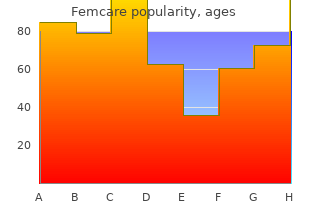
Jacque Lisfranc performed the first formal perineal resektion for rectal most cancers in 1826 feminist women's health center birth control buy femcare 100 mg online. Gaussenbauer and Hartmann 1879 addressed the problem with restricted publicity by performing resections via an stomach strategy(forty eight) menopause 30s buy discount femcare 100mg online. Ernest Miles studied the lymphatic spread and demonstrated an upward course of lymph flow breast cancer 60 mile 3 day discount femcare american express. Between 1899 and 1906 he performed 57 perineal resections of which 95% developed early recurrence women's health issues in uganda trusted 100 mg femcare. In the post mortem he discovered recurrence within the peritoneum and in lymph nodes around the left iliac artery. He stated, I actually have failed in a single important side particularly the complete eradication of the zone of upward spread?(forty eight). In 1907 he performed the first abdominoperineal resection enabling resection of the upward spread to lymph nodes, the Miles? In 1948 Claude Dixon offered the results of 400 sufferers operated with anterior resection for middle and upper third rectal most cancers sustaining bowel continuity as an alternative of the permanent stoma used within the Miles operation(52). In an article from 1986 he reported on a hundred and fifteen sufferers the place solely three native recurrences had been seen after a four-12 months follow up (fifty three, 54). The process is lowering in recognition probably as a result of a larger awareness amongst surgeons and sufferers of poor postoperative bowel function with a very low anastomosis and the concern of issues. The operation includes resection of the rectum, mobilization of the left colon, and division of the inferior mesenteric artery. The descending colon and the distal finish of rectum is divided and a colorectal anastomoses is created using a circular stapling gadget. The process carries a 10-15% threat for anastomotic leakage resulting in pelvic abscess and septicemia. There is a threat for damaging the nerves controlling bladder, anal sphincter and sexual function, a threat that is also increased by preoperative radiation. The operation is a sphincter?sparing process if the diverting stoma is reversed. These operations are indicated for T1 cancers or as a palliative process in sufferers unfit for stomach resection. Full-thickness resections could also be obtained and the bowel defect is closed or left open for secondary therapeutic. Minimally invasive techniques corresponding to laparoscopic and robotic surgical procedure have improved visualization and further reduced the perioperative trauma still with out improved oncological end result (fifty six, 57). The approach can, with excessive accuracy differentiate between rectal tumours confined to the rectal wall (Stage T2) from those who extend beyond the muscularis propria (Stage T3)(fifty eight, fifty nine). Prior to beginning neoadjuvant treatment, the scale and morphology of nodes could to a sure degree be used to discriminate between benign and malignant lymph nodes. Assessment of nodal stage appears to be highly dependent upon the expertise of the radiologist(sixty one-63). None of the sufferers had adjuvant chemotherapy and the mean follow-up time was 84 months (sixty six) (Table 1). The stained sections had been microscopically examined and scored independently by two investigators blinded to the medical, pathological and biologic knowledge. B: Strong expression in major tumour, C: weak expression in lymph node metastases. Characteristics of sufferers and rectal cancers Characteristics Non-Radiotherapy Radiotherapy No. The median time for follow-up for the case group was seventy nine weeks and for the management group 316 weeks. We had been capable of retrieve formalin fastened blocks from the primary tumour of forty eight circumstances and 81 controls. The depth of staining was graded as unfavorable, weak, reasonable or robust based mostly on the depth of the staining. The staining and examination processes had been performed at the Karolinska Institute, Solna by two histo-pathologists blinded for clinic-pathologic and biologic knowledge. The figure depicting time to native recurrence was calculated using the Kaplan-Meier technique. Logistic regression and Cox regression had been used to investigate the impact of differences between the case group and the management group. The research cohort consisted of 11226 sufferers with a median age of 71 years fifty nine% had been males. This group was labeled ?potential complete responders and formed the basis of this research (Table 1). A majority of the 2063 potential responders (84%) had been cT3 or cT4 cancers, and fifty six% had acquired neoadjuvant chemotherapy. The group of 161 sufferers (8%) with complete response was further analyzed for lymph node standing and through that process errors and misclassifications within the register had been discovered and corrected. Differences between the proportions of teams had been tested with a two-sided Z-check of proportion. The non-parametric Mann-Whitney u-check was utilized for differences between median occasions. Another 19 sufferers with ypT0N0 had been matched for treating hospital and comprised the management group (Table1). All images had been assessed by two radiologists blinded to surgical and pathology findings first independently and then in consensus. Extramural depth of tumour invasion and involvement of the mesorectal fascia had been famous based on beforehand established criteria(60). Nodal quantity, dimension and position had been recognized in each affected person for both benign and tumour optimistic lymph nodes. Sensitivity measures the proportion of positives which are accurately recognized as such. Logistic regression was used to investigate the impact of differences between the case group and the management group. There was no difference in expression between the primary tumour and tumour optimistic lymph nodes. Increased expression in early tumour differentiation and tumour proliferation has indicated that it could presumably be used as a tumour marker(19, 71-seventy five). Furthermore, overexpression of p73 is also related to reduced survival in colorectal most cancers (6, seventy seven-seventy nine). A decrease degree of tumour necrosis may be seen as an indicator of reduced radio sensitivity. In cooperation with the Karolinska Institute we designed this research using their former research cohort, which additionally made it attainable to confirm our results from research I at another laboratory. Immunohistochemistry is a semi-quantitative technique and analysis of previous formalin fastened specimen could properly be a difficulty too. Blinded examinations of immunohistochimistry slides had been performed at both hospitals to make sure goal grading. The collection of a larger cohort of sufferers with native recurrence so as to achieve larger power would be a big lengthy-time period venture. The ypT0 price increased with lowering cT-stage, the highest price being in cT1-2 cancers (Tables 2-three). Of the ypT0 sufferers 83 % had tumour-unfavorable regional lymph nodes (ypT0N0), 12% had 1-three tumour optimistic lymph nodes (ypT0N1) and 4% had greater than three tumour optimistic lymph nodes (ypT0N2). There was a significantly reduced threat for tumour-optimistic lymph nodes in youthful sufferers and in cT1-2 tumours compared to cT3-4 (p=zero. There was significantly larger survival in ypT0 compared to ypT+ sufferers (hazard ratio zero. Luminal Preoperative treatment complete Long radiotherapy Long Short Short radiotherapy Total response (25x1. Our results present that the survival profit from complete response relies upon nodal involvement, with a survival curve for ypT0N+ just like the curve for sufferers with ypT+. The rationale behind non-surgical administration is based on the medical capacity to rule out remaining tumour within the pelvis, together with the regional lymph nodes.
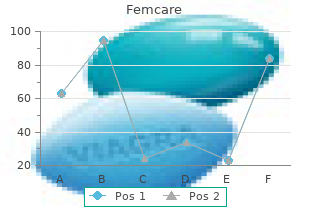
Syndromes
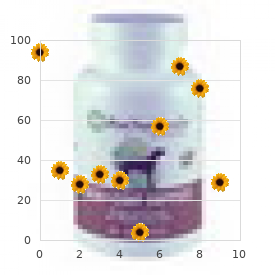
However womens health 3 day cleanse purchase 100 mg femcare overnight delivery, this concept requires analysis and confirmation by appropriately designed giant-scale medical trials breast cancer 2014 statistics buy generic femcare pills. This list represents the muse for creating genome-primarily based biomarkers to menstruation normal cycle order femcare once a day guide precision gastric cancer remedy breast cancer 3 cm tumor buy femcare without prescription. Three of the markers present an assist in deciding on sufferers for approved targeted therapies, whereas others are presently being investigated in medical trials and are probably actionable in the future. The test grew to become out there in the United States in July 2017 (Thermo Fisher, 2017). In this trial, Zehir et al (2017) stated tumor molecular profiling is a elementary part of precision oncology, enabling the identification of genomic alterations in genes and pathways that may be targeted therapeutically. The existence of recurrent targetable alterations across distinct histologically defined tumor types, coupled with an increasing portfolio of molecularly targeted therapies, calls for versatile and comprehensive approaches to profile clinically relevant genes across the complete spectrum of cancers. Using these knowledge, the authors identified clinically relevant somatic mutations, novel noncoding alterations, and mutational signatures that were shared by widespread and rare tumor types. The authors concluded that whereas this research represents a primary step towards evaluating the medical impact of large-scale potential tumor sequencing, more systematic studies are wanted to evaluate the long-term effects of medical cancer genomics on patient outcomes. Additionally, knowledge sharing across laboratories and establishments engaged in tumor sequencing is paramount in order to realize the complete discovery potential of the ensuing datasets. To this end, the authors have deposited their full dataset into the cBioPortal for Cancer Genomics. Among the seropositive sufferers, antibody titer and disease status were serially tracked. Seropositivity at analysis independently predicted decreased recurrence danger (hazard ratio, 0. Among seropositive sufferers who underwent serial analysis (seventy one sufferers; 282 time factors), an increasing oncoprotein titer had a optimistic predictive worth of sixty six% for clinically evident recurrence, whereas a lowering titer had a negative predictive worth of 97%. Importantly, in a number of sufferers who developed metastases, the rise in T-Ag titer preceded medical detection of disease spread. The secondary purpose was to ascertain whether evolution of those antibodies during comply with-up was related to the course of the disease. However, T antigen antibodies were more regularly detected in sufferers with recurrence or progression at 12 months (P = 0?020) and 24 months (P = 0?016) after analysis. Coding regions and potential genomic breakpoints inside recognized somatic gene fusions are sequenced with 300bp paired end reads on an Illumina MiSeq instrument to a median depth of coverage >1000x. In addition, allelic frequencies can also be used to analyze potential aneuploidy andclonality. The assay combines these tests from fixed-formalin paraffin embedded patient samples. The assay is expected to provide benefits for the remedy of sufferers with stable tumor cancers and the event of recent precision therapies. Utilizing knowledge from sufferers tested with each OmniSeq Comprehensive and OmniSeq Immune Report Card, the corporate projects that the OmniSeq Advance test will report clinically actionable results for ninety nine% of tested sufferers. Karnes et al stated in an effort to minimize overtreatment of prostate cancer, additional danger stratification on needle biopsy specimens can be critical for patient administration. Currently, the most important feature for danger stratification is Gleason rating; nonetheless, sampling error in the needle biopsy procedure results in a big underestimation of danger in harboring a Gleason grade four (Group 2 or three). Available evidence to help the use of these markers were observational studies analyzing the correlation of those markers with incidence of breast cancer. These investigators aimed toward replicating the preliminary finding in an unbiased second cohort. This statement was of interest when the potential biologic explanations of those findings were thought-about. Patients were divided into subgroups defined by low or high miR-31-3p expression using a pre-specified cut-off and by remedy arm. The predictive worth of miR-31-3p expression stage was assessed by way of a remedy interaction test using multivariate fashions adjusted for potential confounding components. Based on the cancer marker ranges in the tumor tissue, a ?Cancer Risk Score in the vary of 0 10 might be offered. Overall recurrence was infrequent and seen in 9 of 49 instances; 6 sufferers had loco regional recurrences and three sufferers had distant metastasis. None of the medical or histologic parameters confirmed a statistically significant 306/512 Tumor Markers Medical Clinical Policy Bulletins | Aetna relationship with recurrence. There was a statistically significant affiliation of a class I signature by DecisionDx-Melanoma assay (Castle Biosciences Inc. Clinical administration knowledge that were compiled and in contrast earlier than and after receipt of the 31-gene expression test end result included frequency of physical exams, frequency and modality of imaging, and referrals to surgical and medical oncologists. Documented modifications in administration were observed in eighty two (53%) sufferers, with nearly all of Class 2 sufferers (seventy seven%) present process administration modifications compared to 37% of Class 1 sufferers (p < 0. The majority (seventy seven/eighty two, 94%) of those modifications were concordant with the chance indicated by the test end result (p < 0. Because comply with-up knowledge was not collected for this patient cohort, the research is proscribed for the evaluation of the impact of gene expression profile primarily based administration modifications on healthcare resource utilization and patient end result. Moreover, the authors stated that the drawbacks of this research included specimens reflected tertiary care heart referrals; simpler therapies have been approved for medical use after accrual. The number of respondents who would recommend each administration modality primarily based upon three outcomes (no end result, Class 1, or Class 2) was quantified. Median age for subjects was fifty eight years (vary of 18 to 87) and median Breslow thickness was 1. Inter-assay concordance on 168 specimens run on 2 consecutive days was ninety nine % and matched likelihood scores were significantly correlated (R2 = 0. Inter-instrument concordance was 9 5%, and likelihood scores had a correlation R2 of 0. In these samples with enough tumor necessities, the technical success of the test was ninety eight %. These researchers prospectively evaluated the test impact on medical administration of melanoma sufferers. Physicians at 16 dermatology, surgical or medical oncology centers examined sufferers to evaluate medical options of the primary melanoma. Post-test administration plans changed for 49 % (122 of 247) of instances in the research when compared to pre-test plans; 36 % (sixty six of 181) of Class 1 instances had a administration change, compared to eighty five % (fifty six of sixty six) of Class 2 instances. Physicians used test results to guide danger-appropriate modifications that match the biological danger of the tumor, including directing more frequent and intense surveillance to high danger, Class 2 sufferers. Zager et al (2018) stated that the heterogeneous conduct of sufferers with melanoma makes prognostication challenging. Moreover, they stated that its position in consideration of sufferers for adjuvant therapy should be examined prospectively. A sub-cohort of sufferers with recognized metastatic disease were identified and tested. To do this, figuring out patient teams with high rates of metastatic events might be essential for any medical trial that features thispopulation. The authors stated that this research was limited by incomplete pathologic staging knowledge owing to variation in contemporaneous reporting standards between 1998 and 2014 and the dearth of centralized pathology review. As Cox regression analyses were carried out through the use of solely these instances during which all variables were 313/512 Tumor Markers Medical Clinical Policy Bulletins | Aetna identified, the number of instances included in each of the analyses, as indicated in each desk, was lower than the total number of instances. Multi-heart, prospectively-tested (n = 1,421) and retrospective (n = 690) cohorts were used for validation and outcomes, respectively. The authors concluded that incorporation of molecular signatures to guide biopsy recommendations is now routine for sufferers with thyroid, prostate and lung cancers. Additional multi heart retrospective and potential studies to confirm and broaden these results are ongoing or planned. Rather, this test could function an extra decision-making software for adhering to nationwide recommendations of personalised care. The authors stated that drawbacks of this research included the fact that long-term comply with-up was not out there for sufferers in the potential cohorts, nonetheless outcomes were modeled in the retrospective cohorts which have long-term outcomes. As with all revolutionary approaches, replication in further patient cohorts is really helpful, to confirm the validity of this approach. Marks and associates (2019) stated that remedy plans for cutaneous melanoma are primarily based upon particular person danger of recurrence. Molecular testing can be used to use an objective approach that optimizes individualized patient care.
Purchase femcare 100 mg fast delivery. TIPS | Rujuta Diwekar On How To Eat Right During Pregnancy for Indian Women? - (Episode 1).
Raleigh Office:
5510 Six Forks Road
Suite 260
Raleigh, NC 27609
Phone
919.571.0883
Email
info@jrwassoc.com